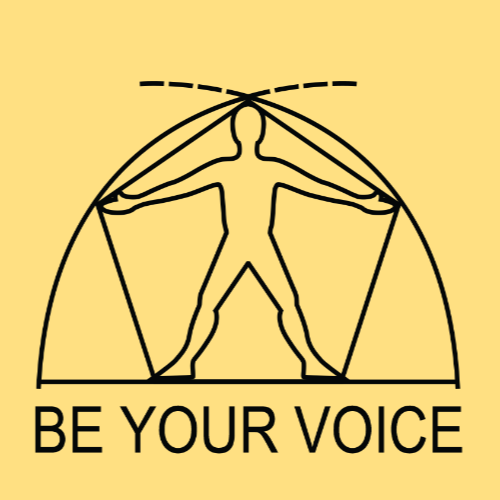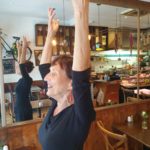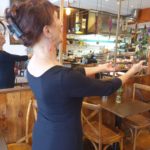18 April 2024
Q What is Pneumaphonie?
A The method created and developed by Serge WILFART, known as “Pneumaphonie” (Breath-Voice) or Wilfart Method, is the result of more than forty years of research and practice in his capacity as an opera singer and voice teacher.
Pneumaphonie acknowledges that a child is born with a naturally powerful voice, rich in harmonics. During the early stages of the child’s development, external factors such as education which could be described as “formatting,” inhibit the natural expression of their voice. The child is affected by emotions that create blockages at the level of the throat and upset the energies present at birth.
It is possible to restore the full energy of a human being.
The practitioner is trained to assess the inhale/exhale and the tensions caused by stress and anxieties, as evidenced by the vocal act.
The goal is the authentic Voice.
A Breath-Voice course begins with a diagnosis mapping the blockages recorded in the Voice, which is the reflection of everything that happens in the body.
Then work on Breath and Voice will allow the Voice and all the Energy of the body to shift from the top of the body towards the pelvic floor and the lower limbs, allowing the Energy to be restored. To achieve this result, it is necessary to call forth, through precise exercises, forces which will confront bodily and psychological tensions, causing a reversal of the energies encountered in the individual, like processes of the same nature used in the field of aeronautics.
This pragmatic method is aimed at anyone who wants to be authentic, without any dogmatic injunction. It also makes it possible to resolve difficulties encountered by professionals such as singers, communicators and executives, and is a valuable resource for professionals in field such as osteopathy, music therapy, etc.
It is practised through group courses of two, three or four days or through coaching, in person or online.
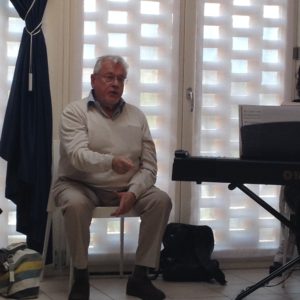 Serge WILFART is the author of two books published by Albin Michel: “Le Chant de l’Être”, sold 50,000 copies in France and translated into Spanish, Italian and Portuguese (English translation still awaiting publication) and “L’Esprit du Chant”.
Serge WILFART is the author of two books published by Albin Michel: “Le Chant de l’Être”, sold 50,000 copies in France and translated into Spanish, Italian and Portuguese (English translation still awaiting publication) and “L’Esprit du Chant”.
Next London Sunday workshop 21 April https://beyourvoice.co.uk/intensive-week-end-workshops/
24 January 2024
Recently, the most common question has been “Who comes to you?”
To answer this question, I have looked at some of the records which have accumulated over the years. People come from all walks of life, usually to a free session. What do they say when they come for the first time?
I want to find my voice again.
I want to improve the quality of my singing voice,
My job involves speaking in public, but I don’t feel confident.
I get tired quickly when I speak for a while, especially when I present something important to me.
I am not happy with my voice.
I don’t feel I breathe well.
Shyness has always been my problem.
My breath has been restricted ever since I experienced trauma as a child.
I’d love to sing and I cannot.
Uncontrollable fear comes up when I speak in public.
Can I free myself physically and mentally?
I experience anxiety around speaking too loudly
People cannot hear me
I lack security, confidence in my voice
It would be important for my leadership, for my commitments to enhance my expression.
I feel like I don’t use my real voice
How can I find the freedom to express myself fully?
I’ve stopped singing professionally, because the repertoire did feel right for me.
A change of career is what I am looking for
I have tried many therapies; what I want is to be fully self-expressed and powerful, and not depend on therapy.
The last one was me.
12 December 2023
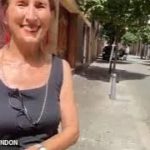
Results in life
17 November 2023

Q&A of the day: postures
https://youtu.be/FDm7I1E_D4c
2 November 2023
The 1 hour interview on the “Getting Real with Hilary” American TV show goes live at 21.00 British time:
https://www.youtube.com/c/gettingrealwithhilary
31 October 2023
1min trailer announcing my interview on the “Getting Real with Hilary” American TV show (Thursday 2 Nov 21.00 British time). Have a look here:
https://youtube.com/shorts/0wRV7_saYyA?si=1APau-z_CzfK2_Fi
21 October 2023
VIDEO : Question about Health. The transcription follows.
Q – Can this method work for people who have disabilities or health problems?
A – Very good question.
For a while, I had problems with my hips. They were not working and I used sticks, and I had problems with walking. This did not prevent me from doing the work. People get old and of course are more limited in their movements, because the joints and everything else gets old.
A lady told me the other day: My doctor tells me I don’t breathe well. I know I should do this (lifting her shoulders to breathe). I said no no no, you should not do this…
A teacher told me: I lose my voice at the end of the day. I know I should breathe from here (showing her chest). I said no no no, wait a minute, I have more for you…
So these people, especially those who think they are diminished because of age or disability, actually they have their own body and their own capacity to breathe. And that’s fine.
I can work with anybody and they find that capacity to be with themselves, and that’s why my work is called “be your voice”, not “make your voice”. It’s about being yourself. Anybody can be themselves. It goes beyond disabilities, it goes beyond age. You can be yourself until you die, and you’d better die being yourself.
So that’s really about finding that.
As a coach what I check is if the voice is open, if the voice is actually talking or singing to me or to others and if I get touched, then I know it’s right. I am touched and I am very moved.
That’s why I do this work. So that people find that.
3 October 2023
Extract of questions and answers captured on an ipad by a participant in the Barcelona workshop. The transcription follows.
Q – What’s the goal of the method?
A – The goal of the method is to open spaces in the body, and make the body more effective in terms of breathing. Then the voice comes with it.
There is a very important component to it: the verticality, the groundness of the body. Through getting roots, the trees get the top. And through getting roots, through the work of breath and voice, we become stronger and can be blossoming as human beings. In many ways, not just the voice. But really expansion and power.
Q – I have done some exercises from you and I can feel the difference. But some exercises are really tough and sometimes I am struggling. Can you comment about this, because I am new to this and not quite confident with it – can you give me some advice?
A – Thank you for the question. Some exercises are challenging. Tough you said, challenging: they bring something that you are not used to doing.
Most exercises hold a challenge. It’s the role of the exercises to present you with a challenge that goes against your habits. All of us, we are born full of potential. The first cry of a baby is a big sound. Then what happens as we grow up? First we stand up. And what happens when we stand up? How can we breathe and stand up? Then we go to school. We must learn… and we must look at the computer… and we must revise for exams. And then parents tell you: do this, don’t do that, sit straight! Sometimes you like to sing, and then someone tells you: “ You don’t sing well. You sing out of tune.” And that’s the end. You feel you cannot do anything. And that’s the beginning of the end. Or the end of the beginning.
Because fortunately we have some ways to help you recover from the restrictions and constraints of society. The way to recover and to find freedom. It’s fine to find freedom in dancing, in singing, in being with others, drinking together, eating together, having fun together. Yet sometimes you find this freedom is something that eludes you. It’s not something you can keep. This method is a way to recover the freedom and the potential of the baby, and to grow in the right way – there is a shift . Breathing and singing, both of them, create something new in the body.
With all the exercises, you confront where you were stopped. With the exercises, you realise: I have roots, and I have the power to keep the space and to grow it. It’s really a matter of developing yourself as a human being who has the power to be happy and to make others happy.
13 September 2023
Question:
I am not happy with my sounds. How can I produce better sounds?
Answer:
First of all, you cannot hear your own sound. The way to check is not to listen while you produce sound, but to record yourself possibly. The coach helps you find the maximum impact for you and others. Find the posture that allows the best breathing. That’s key and that’s what you learn with a coach. Remember that breath can exist without sound, but sound cannot exist without breath.
There is a qualitative difference when the breath is full and relaxed. The quality of breath, vibration and sound cannot go unnoticed, because it touches us directly, as direct communication. In pneumaphonie (breath-voice work) we experience moments when the communication occurs as powerful and ineffable, beyond words.
In “Le chant de l’être”, Serge Wilfart points to this:
“Through the physiological work required by this yoga of sound, people gradually become peaceful and put people at ease around them. They recover their self-confidence and experience an aura of immediate radiance which could be called animal and which does not need words.
If I whisper to a dog in a friendly tone that he is a nasty beast, he will come and lick my hand. If I tell him in a threatening tone that he is a good boy, he will bare his fangs. If I face him quietly, he turns round. If I am scared of him, he will bite me. In the same way, when I walk near a beehive, my fear of being stung increases the chances of this happening: waves and smells of panic emitted by my body signal my presence to the bees and to their stings. Indeed animals, unlike civilised humans, know these codes and use them all the time.
We should re-learn natural communication with our bodies, with our peers, and indeed with any form of life. As the student gradually neutralises anxieties, he starts speaking again in a very ‘ancient idiom’ which for him had become a dead language. Some words don’t exist in that language, such as the verb have or the adverbs yesterday and tomorrow. Indeed this happy speaker just aims at living in the present moment, which is an art of living.”
20 August 2023
Question: Why do you encourage people to be loud?
Answer: Yes, sometimes the participant is encouraged to be loud, to let the body produce a full sound, beyond all the limitations imposed by society and education.
The postures contribute to this, as the whole body is involved. This is how we get the raw material. In a way it’s the animal in us we need to get on board. Then we can develop it into a harmonised human force.
We use specific sets of syllables vocalised in specific ways. The voice obtained is well pitched, ample and can also have the same quality of vibration when spoken softly. Serge Wilfart always used to say: “If you can do more, you can do less.”
In the end the impact is not in the amplitude of the voice, it is in the vibration of the body.
13 August 2023
This week, I will answer a question somebody asked about last week’s blog. They asked me to expand on the following statement: “The voiced out-breath in turn enhances the in-breath.”
Indeed the coach offers physical exercises, and vocalisations on the out-breath. One of the tools of Pneumaphonie a specific set of syllables (yeyiyuya) that is sung on one note at a time. The coach uses a piano to guide the participant. Variations on this tool regulate the breath and can be practised in different postures. The other day, one participant was particularly upset by a condition that made his breathing difficult, although he had received medical treatments. Without proposing any particular position, I started playing one note at a time on the piano, and he followed with the easy sounds he had learned. After a while, the breath flowed more regularly. He was able to relax and continue with a few other exercises.
In a little book published in 2014 (1) a participant described his experience of the same sounds in a challenging posture (reproduced in the picture below)
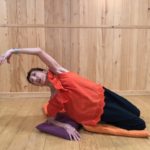 « With knees folded, I sat on my heels, and placed my left arm, elbow to forearm on the floor slightly behind me. My other arm was curved over, palm facing my head, and the task was to breathe in and twist the right hip at the same time and then to release the ‘yeyiyuya’. Whilst initially I found this physically difficult it did provide a tremendous sense of release to the tensions in my sides and I could feel the air and energy going down the body and really feel the voice coming from the pelvis. Then I swapped to the opposite way and felt the same sensation again. When sitting back up there was a really natural feel of grounding and deep expanding breathing supporting the voice. »
« With knees folded, I sat on my heels, and placed my left arm, elbow to forearm on the floor slightly behind me. My other arm was curved over, palm facing my head, and the task was to breathe in and twist the right hip at the same time and then to release the ‘yeyiyuya’. Whilst initially I found this physically difficult it did provide a tremendous sense of release to the tensions in my sides and I could feel the air and energy going down the body and really feel the voice coming from the pelvis. Then I swapped to the opposite way and felt the same sensation again. When sitting back up there was a really natural feel of grounding and deep expanding breathing supporting the voice. »
In his book Le Chant de l’Être (2), Serge Wilfart mentions the case of “a young woman who had suffered episodes of paralysis since birth. As she advanced through the sessions, she stood up straighter and adopted a different posture. Her speech, which had been hard to hear and even harder to understand, developed dramatically thanks to work on folk songs performed in various positions. Little by little, the voice production became less anarchic and the abdominal breathing more normal. When she sang, the lyrics were very clear and understandable. Subsequently, the same lyrics, spoken and based on the same breathing foundation, kept the same qualities. In addition, an improvement was recorded in the daily behaviour of the teenager. The episodes of paralysis became rarer and finally disappeared.”
Let’s conclude with a simple observation. Often people launch into speaking or singing without breathing. After the first line of a song, they need an in-breath to continue. Hence the use of singing in treating conditions such as chronic obstructive pulmonary disease or even long COVID.
(1) Brigitte Deneck (Author), Margaret Riches (Author), Jason Parrett (Author)
BE YOUR VOICE Raw Book Preview: Breathing/Voice Coaching by Brigitte Deneck in London: an
insight into clients’ experiences. Format: Kindle Edition
(2) Serge Wilfart (Author), Jacques Deperme (Preface)
Le Chant de l’être: Analyser, construire, harmoniser par la voix (French Edition) Kindle Edition. Also in paperback – translation awaiting publication
6 August 2023
Q&A
You are invited to send questions to bdeneck@beyourvoice.co.uk
Answers will be published every week.
Question:
What is the point of putting people in unnatural positions to help breath and voice?
Answer:
Today I was working with one participant using various positions involving twists on the in-breath in a standing position. For example twisting the arms stretched above the head, or twisting the arms stretched forward while keeping the rest of the body upright. And vocalising at the top of the in-breath.
(I have asked a photographer friend to take these pictures of me so that it would be easier to imagine)
These exercises are positions we would not do in everyday life. They are really meant to develop something in the body.
They help concentrate the energy. The voice becomes stronger and fuller. This voiced out-breath in turn enhances the in-breath. The inner sensation is one of presence, grounding in the lower body and strength in the middle of the body.
This particular participant sometimes performs at the piano and sings some songs. She mentioned after the session that now people express appreciation of her voice, which they never used to do.
22 May 2019
The 7 Stages of Healthy and Authentic Voice
Stage 7: Communication
« According to the myth, in the beginning man had knowledge. He possessed the primordial vibration, the heavenly idiom understood even by animals (…)
The language of birds, the language of the initiated and the language of St Francis of Assisi, is nothing other than this language before Babel, enriched with animal potential, then lost as it became fragmented into ethnic dialects. Just as some shamanic cultures require that a true man learn the language of animals, the practice of Singing in the highest sense attempts to revive this ‘art of sound’ where posture, breath and voice compose a code of pure communication. »
(Serge Wilfart, Le Chant de l’Être, Albin Michel Paris – translation ready for publishing).
8 May 2019
The 7 Stages of Healthy and Authentic Voice
Stage 6: Speaking
The speaking range is the middle of the singing range. So speaking should be easier than singing. For some it is not, because the mind interrupts the natural process: thoughts about ourselves in particular. Focusing on the source and direction of breath and sound energy helps breaking through the limitations we have imposed on ourselves.
Just watch this short video of Chris:
“I used to be quiet. I used to get people say to me: “I can’t hear you. Say that again.” The exercises here help me to find the right centre of my voice. Just through positioning your body in different ways you can find the vibration just moves and you can find where it’s natural for you.
Just that allows you to be more relaxed with your voice instead of straining and getting a sore throat and shouting from up here. My natural voice is very deep, but I did not know until I started this.”
26 April 2019
The 7 Stages of Healthy and Authentic Voice
Stage 5: Singing
In our coaching, we use simple vocalising tools, as a structure to put back in place the whole system of breathing and sound.
The purpose is not to externally fabricate a voice that would be acceptable according to aesthetic standards of “beautiful singing”.
It is to analyse the muscular and inner logics at play in the production of sound and to reconstruct a coherent and natural voice.
This practice may involve producing horrid cacophonies which subsequently develop into very beautiful sounds. It’s about clearing the voice and re-establishing natural alignment:
low-high harmonics
breathing-sound
body statics
THE TOOLS ARE SIMPLE AND NOT JUST FOR SINGERS .
Here Laura, a singer, describes the first results:
7 April 2019
The 7 Stages of Healthy and Authentic Voice
Stage 4 : Voice production
We have a voice box, which is located at a very strategic point. The vertical axis of the body and the horizontal axis (represented by the arms when they are extended horizontally) meet there. This is where breath changes its nature. Instead of just returning into the atmosphere, it produces something. That’s a very big challenge. That’s where many people at different stages in life get stuck.
Babies experience fits of anxiety very early on, and many adults find it difficult to articulate. It is literally a crucial point, as in ‘cross’.
To free the voice, it is necessary to clear emotional baggage and tensions accumulated in the upper body.
To illustrate this point, I thought I would give you an extract of the Magic Flute by Mozart, sung by Fritz Wunderlich, an exceptional singer. His character, the prince who plays the flute, conquers wisdom in the end. Look up the whole story of the Magic Flute and note the role of the Flute as well (breath and sound).
Use the contact form or my email bdeneck@beyourvoice.co.uk to ask questions
30 March 2019
The 7 Stages of Healthy and Authentic Voice
Stage 3 : Vibration
Last time I pointed to geometry and forces in the body, linked to the in-breath.
Let’s start considering vibration, carried by the out-breath.
The first meaning of ‘vibrate’ is ‘throw’. This is about power and direction.
Take a big in-breath with your mouth open, hold for a second, then produce the sound “ee” in a constant way until there is no air. Go back to breathing normally.
Notice if you have been able to keep the sound constant.
We sometimes use the analogy of archery. Imagine you are at the same time the archer and the bow. The sound is the arrow.
Zen in the Art of Archery by Eugen Herrigel is often used for reading in the sessions. The teaching of the archery master has to do with non-doing, which can be learned only by experience.

23 March 2019
The 7 Stages of Healthy and Authentic Voice
Stage 2: The Body
Building the body? Yes
How?
I remember the transformation of a man from one workshop to another. The first time, he looked like he wore a cuirass or armor made of muscles. After a few months, he was very different, quite relaxed and harmonious in his appearance. Same body, different appearance.
What happened inbetween was breath-voice work.
In this work, 2 main directions are put in place: a vertical axis coming down like a tree taking root and a vertical axis coming up like the ascending sap in the tree.
Precise dynamic positions allow the breath to shape the body as a musical instrument.
I love the following artistic rendition of the geometry and forces at play:
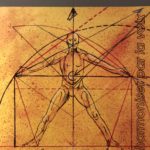

15 March 2019
The 7 Stages of Healthy and Authentic Voice
Stage 1 Breath
There can be breath without voice, but no voice without breath. Breath is required. If we look at it more closely, breath is life itself.
For a moment, observe your breath. As long as you are alive, it comes in. Then it returns outside. Then a cooler breath comes in again and a warmer out-breath goes out. Can you feel the energy coming with the in-breath?
In-breath is so important. People tend to focus on voice projection, voice production, on the singing. But there is no quality sound without quality in-breath.
My experience is that, by observing the in-breath of the person who is working with me, I already have a good idea of the sound that will come out.
My job is first to help people find their in-breath.
So what makes a good in-breath?
Some postures are meant to prepare the body for this. They open the body in places it is used to retracting.


None of them are static. The coach intervenes time and time again to induce the opening. Then the student becomes more and more aware and explores opening and direction. Nobody is used to this at first. Expect some surprises.
This work involves voice of course, which is also a tool to improve the in-breath, which in turn improves the voice.
Next time I will expand a bit more on the nature of the work.
8 March 2019
Video about Pneumaphonie, featuring my coach Serge Wilfart, who demonstrates some key exercises.
12 July 2018
A First Session
Whether you have experienced Pneumaphonie or not, I would like to share here what a first session looks like, using an extract of Serge Wilfart’s book Le Chant de l’Etre. After being very successful in France, this book will be published in English as soon as we identify the best possible publisher for it.
“The best way to describe the method of vocal training is probably to follow the steps of the learner who arrives for the first time. Who comes to the sessions and why? One has been sent by his doctor because of respiratory problems. Another is looking for self-development. Yet another uses her voice professionally to teach or to speak in public. The diversity of initial motivations shows that this method can be relevant to anybody, including from time to time those who want to sing and will have to go through a longer process.
Indeed students usually do not care so much about their voices, whereas the ‘singers’ think about it, invest in it with their whole will and therefore unconsciously delay their personal progress. In the first instance it is better to let the voice come out naturally, without any vain enquiry on its aesthetic value. Vocal truth is paramount: beauty will follow. Ethics prevail over aesthetics.
Whatever the applicant’s motivations, the first approach is always an interview. It is about getting an insight into who the individual is, though the words used are of little interest to the voice teacher. Sometimes the future student does express his or her aspirations, but more than anything, the interview allows the teacher to observe the energetic and physiological, especially respiratory behaviour, to determine the degree of anxiety, to bring forward the strengths and weaknesses of the character. How did they build themselves? What is the defective foundation where their will to exist in front of others makes them rest?
The initial interview is conducted seated before the applicant stands up to become a student and is assessed by reading a random page of Hara – Vital Centre of Man (Dürkheim) or Zen in the Art of Archery (Herrigel). As happens in all works of a universal nature, these books present a remarkable property, which is confirmed from year to year: for nine out of ten individuals the passage chosen at random refers to the problem they have to solve.
The reading assessment consists of two stages. First the student reads aloud without any correcting intervention. This exercise reveals how the student stands, specifically how he holds his spine. Then in the same spontaneous reading, the next instruction is to use a louder voice, which allows assessment of the respiratory and energetic reflex. If the energy gets scattered upwards and pulls the voice towards extra sharp sounds, this shows that the reflex is reversed. On the other hand, if the voice asserts itself towards inner low harmonics, this shows that the reflex is fundamentally healthy, in spite of unavoidable deficiencies.
It is then time to act on the reader’s statics in order to try and encourage his ‘vocal gravity centre’ to shift. Through interventions on the head, shoulders or at different levels of the spine, the practitioner does what martial arts do: he uses the other’s force so that he loses balance and rectifies the logics of the breath/sound relation. The voice changes at this very moment and the practitioner should make the student hear and feel what it should, and will become. At the end of this first approach, the individual’s body, with its developmental potential and abilities, has already revealed itself.
There are never two identical cases to be found in the voice sessions.
Each student requires new availability and permanent attention, which allows the teacher to discover what, in his way of functioning, specifically contravenes the ideal model of verticality for generation and flow of breath – a model which is common to all human beings.
It shows an animal on two feet, anchored in the ground and truly standing, with the upper body freed by the strength of the grip on the ground. This foundation and erection of the body frame is the same for each of us. It is essential for any trainer interested in vocal work to always keep it in mind, in order to identify the distorted construction requiring correction in the aspiring singer.
‘Correction’ does not mean forcing into place, but rather (although this is perceived as artificial) bringing the individual back to the true original axis which his tensions and habits keep resisting, and eventually align with. The body records unknown sensations which it will later assimilate and replicate; it starts producing unheard sounds, which are identified by the ear and can be subsequently reproduced.”

13 February 2018
Do you know what Changemakers are? There is lot behind this word.
I interviewed Heather Salmon, Author, Coach and Changemaker, who has created the Positive Change Initiative.

B: What is change making?
H: Change making is the activity or work that people engage in, people who are passionate about making a positive difference in our world. Change making is what Changemakers do, and Changemakers are people who are willing to make themselves responsible for doing the work that finds solutions to the world’s many challenges.
B: This applies to people in organisations I suppose.
H: This applies to individuals, organisations, governments, international organisations. The only criterion for people to be called Changemakers , is that what they are doing, their engagement, is around making the world a better place. It does not have to be for millions of people, it can be for your nextdoor neighbour, for one individual, for one child, for one type of animal. It doesn’t have to be on a large scale. It’s about the engagement that actually makes a positive difference.
B: Tell us more about you.
H: My entire work has been a journey towards becoming a Changemaker. I have spent a number of years in a range of different for- and not-for-profit businesses, both on a paid employee basis and working for myself, also a lot of work as a volunteer in different organisations. The common theme for me in all of the work I have done, has been the ability to make a difference. That’s what always drew me.
In particular what actually crystallised my passion was a project in Zimbabwe, a country I have never been to. I was particularly concerned about news reports at the time that women and girls were unable to live their lives due to the lack of feminine care products. In the case of girls, that meant that overtime they would fall behind at school and drop out of school – and early marriages because parents could not afford to maintain and keep children who were not productive, or not learning something to be more productive when they were older. I could not imagine what my life would have been like if, through my teens, I would have had to drop out of school, because there were no feminine care products to allow me to get on with my life. All the opportunities I would have missed out on. Indeed I have had an amazing life, and being functional as a woman was a critical part of that.
This issue occured for me as a right, not a luxury. I thought: “Heather, here is an issue that you are really passionate about, that you really care about, that you can’t really argue with yourself, but … someone else is going to do it. How can you do it on your own?.. “ I ended up with: “If I did not do something about it, I should not complain if nobody else did.” So, I created this little project. It was part of a leadership programme I was doing at the time. I just went into action, talking to everybody, asking everybody: “Do you know anyone in Zimbabwe?”. Many people said: “Do it somewhere else, because in Zimbabwe it will be hard to get anything done.” I thought: “No, because that’s the place where they need it the most.” At the time I was working for a large humanitarian organisation. I happened to be at a network event and spoke to ten people about this. Someone said: “Oh, my parents live in Zimbabwe. They emigrated there twenty odd years ago. I was born there. My mum works for the community of deaf women and girls, and they are seamstresses.”
With feminine products, the whole point was to have them locally sourced, with local materials that were going to be be sewn. That was perfect. I had found a community that was already set up to deliver my project. To cut a long story short, she put me in touch with her mum. I gave £200 seed funding and then £30 a month for 2 years, i.e. £1 a day.
Ten years later, I received a wonderful email from Zidi, the woman who was leading it. The project was not only successful as she worked to
allow women and girls in schools to have feminine care products
allowing them to continue their education, but it also took off in small pockets and started to take off in other parts of Zimbabwe. There is a lovely story of 2 girls who heard about the project, were really excited
Someone gave them a sewing maching, so they made their feminine care products, gave one each away to their friends and their friends came back and bought more, and their friends and mothers and aunts and grandmothers also saw the product and wanted to buy them too.
It took me another few year to get that it is what I am really
passionate about, who I am in the world. That was really the project that made me think. All the experience I had, the various skills I have developed, all of it I could put in the service of enabling others to make a positive difference. That’s when the Positive Change Initiatve was born.
B: Can you name organisations you worked for?
H: I worked for the British Red Cross on the UK Service Development for 6.5 years. I was a volunteer at Magic Breakfast and part of my volunteering was a winning application for the
charity of the year award. That was a wonderful experience.
I’ve worked at a large City law firm many years ago, which is not my finest area, but I learnt so much and they were really excellent people
I have worked for many smaller charities.
Years ago I volunteered for Afield which is the Foundation for international environmental law.
Many years ago I lived in Paris – twice. The first time I was there I worked for the International Voluntary Service which is based at UNESCO, a really fantastic experience.
I have worked for very small charities. I have worked for large charities. I managed a small law firm in Islington for 5 years. I also also assisted an organisation which unfortunately no longer exist, called “Law for All”, a phenomenal organisation bringing good quality law to disadavantaged people across the North of London. I have worked for very large organisations and very large charities, both domestic and international. I have also volunteered for a number of smaller charities and smaller organisations. I have worked in a very large city law firm and in very small community based law firms. I have worked, not for an internatonal organisation, but based at an international organisation. So I learned a lot about the UN whilst at UNESCO.
All of that experience led me to the conclusion that, to do really great positive impact change, for me it was probably better to be empowering and nurturing change through other, than be a part of an organisation, where I tend to find that one gets sucked into the political dynamics of the organisation, which tends to get in the way of change.
I am fundamentally a catalyst of positive impact change and
to be a catalyst you don’t want to be too deepy imbedded in what’s already there. The whole idea is that I am there to transform what is already there and take it to the next level.
B: You’ve written a book… Is it about this?
H: I have written 2 books.

The published book, Newborn, is about my journey. It’s not about the specifics of where I worked. It’s more about how I have taken the life I have had and shaped it to be the life I want. The idea of the book is to give people an understanding that, whatever their life has been, they too can shape the life they have and make it into the life they want. You are never defined by what you’ve been, but defined only by the actions you are taking in the moment to take you to where you want to get to.
That is the message in my book. It’s about to be published again. I have been working on catching the Zimbabwe story as an example of what I mean by “following your dreams”.
My second book is more directly about change. When I was at the Red Cross, somebody who had recently started in one of the regions, introduced herself. I said my name, Heather Salmon. She said: “Oh, you’re Heather Salmon”. She said: “Whenever I ask anything of anyone at the head office in my region about how to get something done, they say ‘Speak to Heather Salmon’.” I did not realise that ‘s what people were saying. She said “Yes, how did you create that profile for yourself in the organisation?” I had not had a clue, first that people were saying that about me, and secondly, when she asked me the question, I did not have a clue what it was I was doing, or who I was being that people would say that about me. So I started to take a look, and I then carried on just exploring what it is I do that had people say that if you want to do great change, go to Heather Salmon.
I left the Red Cross and this led me to come up with my 10 steps. I am doing this and I am doing that. I see this happening and that happening.
I decided to explore these ideas. I took these ideas off to Cambridge Judge Business School where I did a Postgraduate Diploma in Entrepreneurship and I really explored. Could I use the way I work, can I give that away to others to nurture and empower them to do the change that they are passionate about?
My second book is about that journey. More than that, it’s to give people the guidance they need to do change the way I do it, so that they can be as effective and even more effective than I have been at change in the past
B: It’s not just a book, is it?
H: People have different learning styles.
I coach. I love people. People are my passion. I have studied and explored the differences in people all my life.
My observation as a coach is that there are 4 learning styles. What I decided to do is to provide a route to understanding learning and using my method, my 10 steps through 4 different media.
. The book would be one, for intellectuals who like to read or do a course.
. The second for what I call emotional leaners. They learn through doing with people. They have to be in groups and interact with people to learn.
So there is a facilitator’s pack that picks up the same 10 steps and breaks them down. So you can have focus groups and bring groups together and you learn as you teach.
. Then I am looking at a virtual training platform, for what I call the “in action learners”. You take a small step in the method, you learn that, go out and practice, come back and apply it. You learn in small increments: learn and do, learn and do, learn and do, rather than reading the whole thing in one go.
. Finally the fourth product is an online platform to capture the change data that you are gathering. That is for experiential learners, people who buy a piece of equipment and don’t want to read the manual. They don’t want anyone to tell them how to use it. They just want to jump in and switch all the buttons on and see what happens and work out things by themselves. They often innovate by finding new ways to use the product and may find a new business idea. With experiential learners we need to allow them to gather the data in a way that they start to learn the method in the background. But what they are really focused on is using it and making it work in the world.
B: How can my voice work help you perform in what you are up to?
H: Actually I would extend that question to say that your voice work would not only help me, but would help any Changemaker in performing their work, because one of the key aspects of being an effective change maker is inspiring people to believe that they can actually change something that they care about. They go into action to find the right people, to engage with them, to access the right resources. Of course it requires certain personality traits such as determination, consistency, integrity, but being very powerfully connected to your unique voice in the world is fundamental to your sucess.
For all the years I cared very deeply about the world – I am talking about many many years – I could not quite articulate it, because I had not connected to the source, to the root of my voice in the world. What I found in doing your work is that not only is it enriching my writing – which it is interestingly – but also I am starting for the first time to take on public speaking. I have been invited to do a talk at a university about working in the for- and not-for-profit sector. Before I had done your work, I would probably have shied away from that. Whereas now, I know there are certain techniques I can learn around managing my breathing and how I choose to remember what I might want to say. But the key thing is, as an emerging public speaker, that I trust my voice not to let me down. I just have to be willing to be authentic, and to be known by my audience,
and the connection I have to my voice. I trust my voice not to let me down.
I think it’s something that anybody and particularly change makers, would find a very valuable tool.
![]()
9 October 2017
Throat problems?
The throat is where breath becomes sound.  In the circulation of energy, the throat has a ‘crucial’ role (crucial = cross). Indeed you can see the structure of the human body as a cross. The throat is where the vertical and horizontal axes meet. It is where anxiety and anguish are experienced, as a constriction that restricts breathing, and subsequently sound.
In the circulation of energy, the throat has a ‘crucial’ role (crucial = cross). Indeed you can see the structure of the human body as a cross. The throat is where the vertical and horizontal axes meet. It is where anxiety and anguish are experienced, as a constriction that restricts breathing, and subsequently sound.
The coach challenges the student to let go and rediscover freedom. It is like practising a martial art where your enemy is yourself.
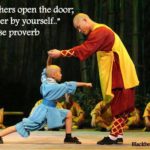
The postures may remind the practitioner of various disciplines. It’s you and yourself, like Aure in this picture:
![Copie de _MG_2551[1]](http://beyourvoice.co.uk/wp-content/uploads/2017/09/Copie-de-_MG_25511-150x150.jpg)
In the last workshop in Bournemouth, I read a short extract from Serge Wilfart’s book about chakras and the participants requested I share this in writing. So here it is:
After the first improvisation and reading exercises, which locate the problems and point to solutions, work on the singing voice ‘deconstructs and reconstructs’ simultaneously, while affecting the seven chakras. The first two chakras have been identified as the location of life energy. Chakras 3, 4 and 5 (the. latter at throat level, the delicate passage for breath and voice) are linked to emotions, whereas 6 and 7 are the focus of spiritual life. The biggest problems always have to do with the speaking voice, directly linked to emotions, in the middle area 3/4/5 which covers rib cage and phonatory system. It should be emphasised that the throat chakra is the most difficult to ‘go through’. Its location is strategic as it commands the harmonisation of the self: the phonatory apparatus is encased in a bottleneck between the verticality of the body (the spine) and its horizontality, materialised in space by the shoulders – extended arms line. The throat chakra, through which breath filters and transforms force into pressure and muscular work into vibration, is exactly located at the point where, in human geometry, level and perpendicular meet.
The whole work on breath and sound consists in freeing tensions of emotional origin that block the upper body: thoracic spine, chest, shoulders, back of the neck, jaws. It is about wearing out all the parasitic energy accumulated by anxiety, especially in the thoracic spine, so that it shifts into the Hara and joins the life energy which it had been separated from. This re-grounding contributes to the ‘plant’ and give roots to the human structure (which can be pictured as a cross), thus allowing it to be reconstructed from a stabilised and strengthened stance.
The ‘middle slice’ of chakras 3, 4 and 5 (solar plexus, heart and throat), which is the obstacle to growth at the level of Self, reminds me of a disused hour-glass, whose little mineral grains would remain stuck in the upper part of the instrument. Such stagnation blocks any spiritual development. The work on the singing voice aims at cleaning the middle channel to restore drainage through the ‘narrow gate’ and fill the lower part again, thus allowing the hour-glass to fulfil its function again.
The principle of the method is to de-structure the upper part and to fill the lower part. The sand blocked on the upper level is an image for diverted captive energies which have to re-enter their receptacle, and may tilt over at the right time. This image illustrates the fact that a strong authentic personality cannot be reconstructed without the fabricated character first being dissolved and the ego being cleansed. Once the upper part of the hour-glass is emptied of the clutter, it becomes available for another type of behaviour, accepting emotions without being overwhelmed by them.
Translated from Le Chant de l’Etre by Serge Wilfart – Albin Michel, Paris
